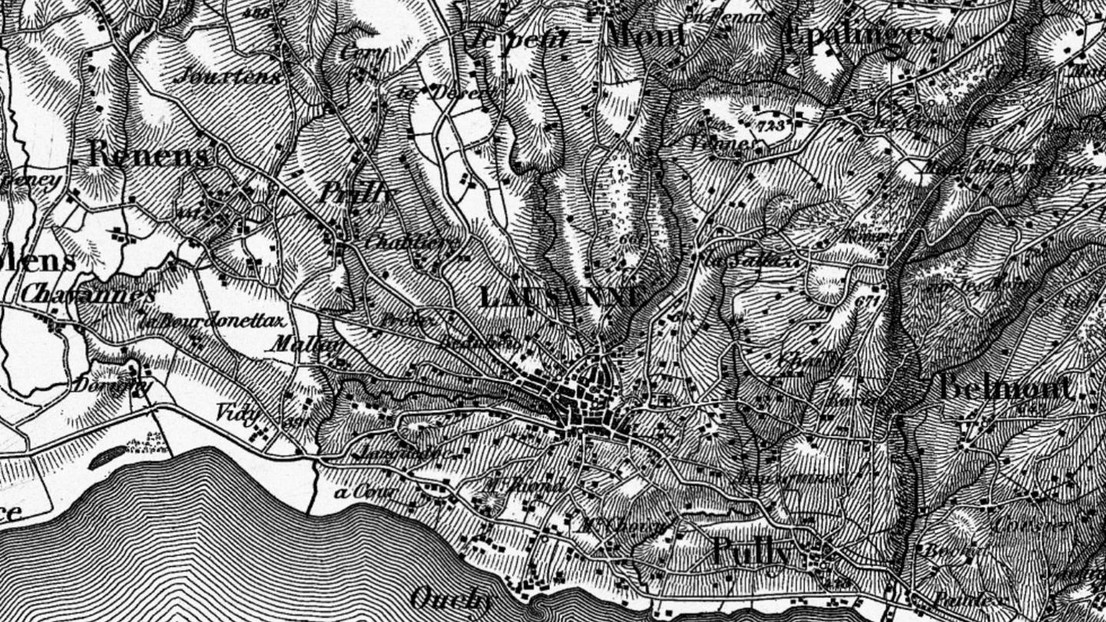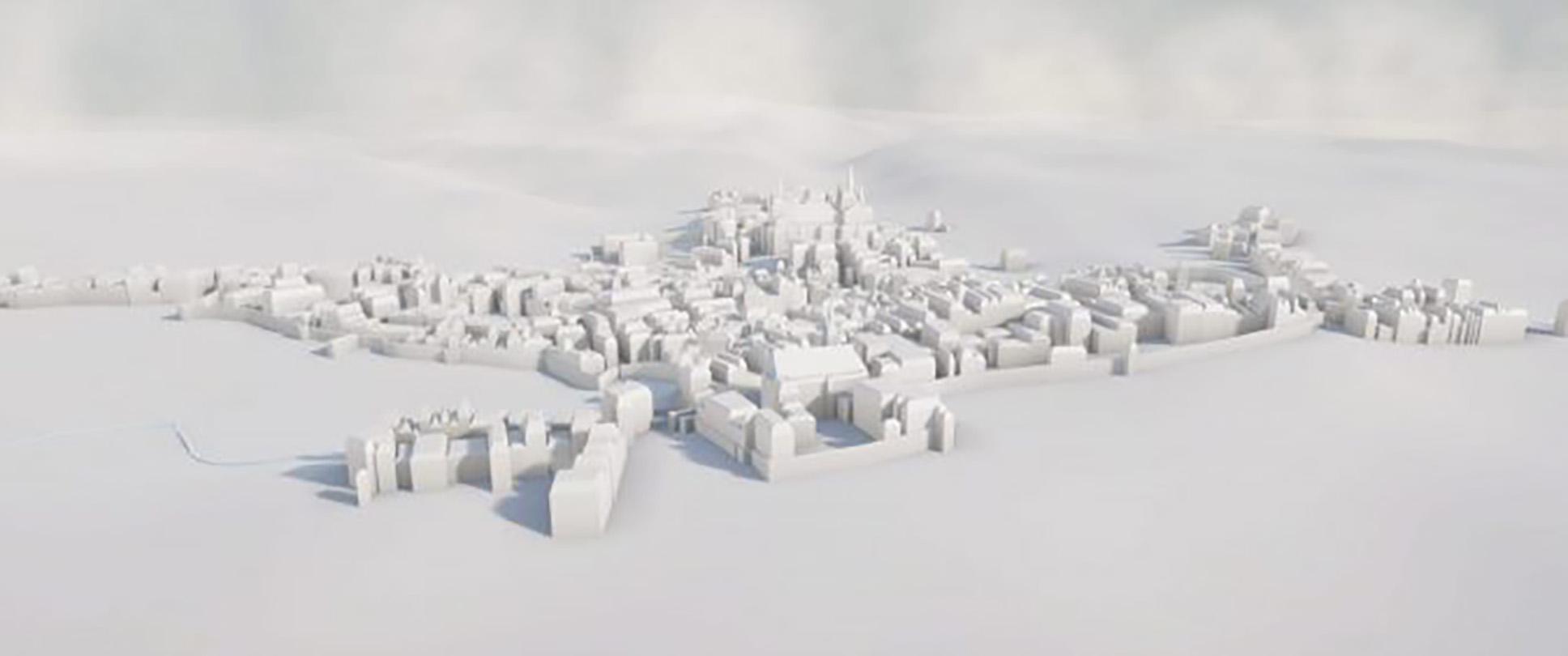
EPFL
The Time Machine Unit at EPFL uses cultural heritage and artificial intelligence to make the historical data of cities such as Venice and Lausanne accessible to the public.
If you want to recreate the past with the digital tools of the present, where do you start? This was the question that spurred the creation of the EPFL Time Machine Unit, which manages the Venice and Lausane Time Machine projects.
For over five years, the Time Machine Unit at EPFL's College of Humanities has been developing tools and methods that make traveling through time as accessible as traveling through space, integrating many kinds of data to recreate a global context and reconstruct cities, including Lausanne, through 3D models of the past, historical maps, photographs and engravings, tax declarations, censuses, directories, and socio-economic, energy-related and ecological data. The central idea of the Time Machine, which is part of the larger European Time Machine project, is that the data unlock access to past information and provide insights into projections for the future.
"I see my professional mission as trying to democratize the access to historical data," says Isabella di Lenardo, the coordinator of the Time Machine Unit. "Every new technology transforms the way we share information about the past: manuscripts on parchments, printed books, web pages and now AI. How do we convert information that comes from ancient media, archives, books and paper, and make it available in new interfaces? We're essentially trying to translate historical information that is quite inaccessible to a wider public, using today's most advanced technology to make it indexable and searchable so that most people - and machines - can access it."
New ways of exploration
To do this work, the Time Machine Unit has developed methods, processing pipelines and a dedicated platform that accelerate this extraction and repositioning process, offering a fundamentally new way to explore historical information. Thanks to recent advances in large language models, many tasks that were highly complex just ten years ago can now be mostly automated. It's now possible not only to read handwritten texts in administrative documents, extract place names from maps, and retrieve geometries from 19th-century cadastral records, but also to automatically reposition scenes depicted in engravings, paintings and ancient maps.

"Before machine learning entered cartography, all the work involved in converting an analog map was done manually. Someone would use software to redraw, for example, the road network, the buildings, everything, by hand," di Lenardo says.
"Today, we can extract this data at a huge scale and completely automatically. But it's not simple to do. We need to find algorithms that are generic enough to understand all types of maps. It's a long process of refinement to find an interesting combination between human verification and machine validation. It's a loop in which the human and the machine work in synergy. We are creating data flywheels. For instance, the more ancient the map we process, the better we are at processing new ones. The machine continuously relearns how it extracts more data and uses this data to improve its learning. The datasets we have today at EPFL are so powerful that we're able to process thousands of maps and extract most of the information they contain automatically."
Educational programs
Using these data, the Time Machine Unit offers educational programs, courses, and hands-on workshops and seminars. The courses offered at EPFL at both the bachelor's and master's levels allow students to use the extensive data about Lausanne to work on projects answering questions such as: How did jobs and migration change over the years?; How did the urbanization of Lausanne in the 19th century transform the vineyard landscape in the south of the city?; and How did the Swiss political landscape evolve between 1890 and 1980? among many others.
"Their contribution is fundamental both in terms of data production and refinement, and from a research perspective," di Lenardo says. "I discovered that today's students really want to be involved in this practical work of densifying information about the past. It's as if we are offering them a way to have an impact using their extraordinary engineering and historical skills to transform the way historical data will be experienced."
Lausanne in 1831 in a book and and online
The book Lausanne 1831 will be available starting this summer. It is the publication of only one of the countless sources related to the city of Lausanne, namely the 1831 'cadastre parcellaire'. The book contains a morphological and socio-economic analysis of Lausanne and its administrative surroundings, the countryside, and forests prior to the arrival of the great urban transformations. All the data transcribed and analyzed by computational methods are published in the text and on the Time Machine Unit webpage that allows anyone to access them and produce new knowledge and interpretations.
Its size alone, more than 400 pages and more than 30,000 transcribed records, gives readers an understanding about volume of information needed when studying the historical information of a source in a comprehensive way. The book explains how the digital approach changes the scale of understanding phenomena, the methods, the historical questions that can be addressed to historical sources, and even the results of analysis.
https://www.epfl.ch/schools/cdh/time-machine-unit/maps/berney-cadastre-1831/






